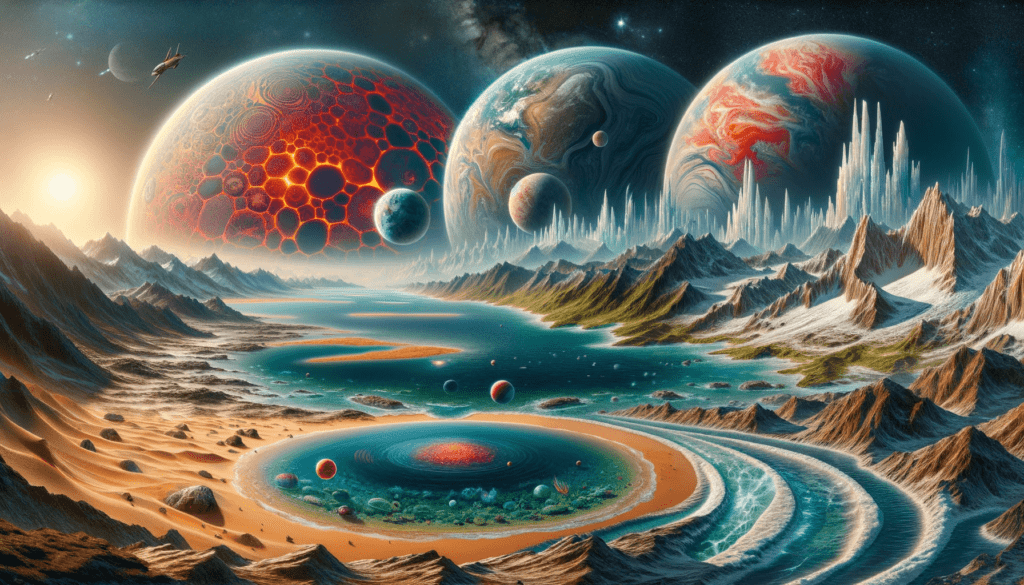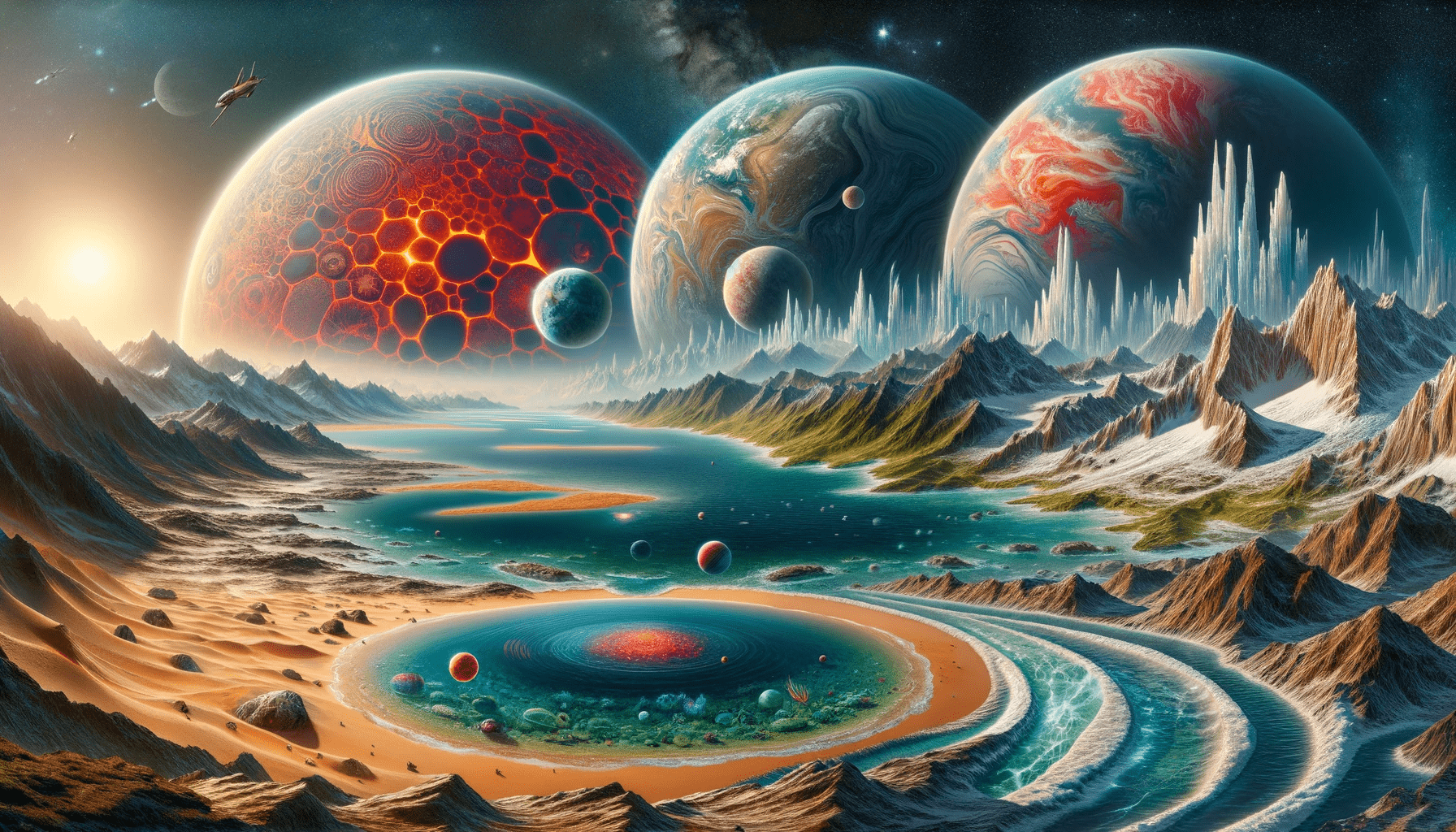Introduction
The world we live in is infused with natural beauty and phenomena that never cease to amaze us. One of the most fascinating aspects of our planet is the creation of waters, lakes and beaches. These breathtaking landscapes have a rich history and are the result of centuries of processes. In this blog, we take you on a journey through the world of natural splendor and explore how waters, lakes and beaches were created.
Origin of Oceans and Seas
The oceans and seas that cover our planet have complex origins dating back millions of years. They were formed by various geological processes, such as tectonic activity and volcanic eruptions. The early Earth’s surface consisted mainly of magma and rocks, but over time huge amounts of water vapor began to be released from volcanoes. This water vapor eventually condensed and caused the formation of oceans and seas as we know them today.
The Role of Rivers and Rain
In addition to volcanic activity, rivers and rain have also played a vital role in the creation of waters, lakes and beaches. Rivers constantly carry water from higher areas to lower areas, and they carry sediments and minerals. These sediments are deposited and can promote the formation of lakes and beaches. Rainfall is another important factor because water can cause erosion and contribute to the formation of valleys, gorges and canyons, which in turn can flow into lakes and eventually into seas and oceans.
Formation of Lakes
Lakes are intriguing bodies of water that can form in a variety of ways. One of the most common ways is through glacial activity. In areas where glaciers are present, they can carve out huge potholes and gullies in the landscape. These depressions can fill with meltwater, resulting in beautiful lakes. Another process is tectonic activity, in which moving earth plates cause certain areas to subside, creating lakes. In addition, lakes can be formed by volcanic activity
The Birth of Waters, Lakes and Beaches: A Journey through Time
Introduction
The world as we know it today is dotted with beautiful waters, lakes and beaches that enchant us with their beauty and serenity. But how did these natural wonders actually occur? In this blog, we take you on a journey through time and explore the fascinating origins of waters, lakes and beaches around the world. From the forces of nature to the centuries-long processes that contributed to their formation, discover the hidden history behind these breathtaking landscapes.
The Forces of Nature
The birth of waters, lakes and beaches is a story of the forces of nature that have worked tirelessly over millions of years. Waters, like rivers, were created by the convergence of numerous streams and brooks, propelled by gravity. These waterways gradually carved out deep gorges, known as river valleys, along which water found its way.
Lakes: From Glaciers to Volcanoes
Lakeshore areas, another wonder of nature, have their origins in various processes. Some lakes were created by melting glaciers that left huge hollows in the landscape. These glacial basins filled with water, resulting in beautiful glacial lakes. Other lakes owe their creation to volcanic activity, in which volcanic craters were filled with water, resulting in picturesque crater lakes.
Beach Formation: Erosion and Sedimentation
Beaches, with their golden sands and vast shorelines, are the result of long-term processes of erosion and sedimentation. Waves caused by wind and tides slowly but steadily shaped the coastlines. They take sand and sediment and deposit it along the shoreline, slowly creating beaches. The sand is deposited in characteristic shapes, such as dunes, cliffs and coastal plains, which form the beautiful landscapes we admire today.
From Microscopic Sea Creatures to Coral Reefs
Waters, lakes and beaches are also home to incredible biodiversity. They provide a home for various species of plants and animals, and play a crucial role in maintaining ecosystems. The waters of the world are home to microscopic sea creatures, which over the centuries have helped form calcareous structures such as coral reefs. These reefs are true treasure troves of biodiversity and form beautiful underwater landscapes.
Conclusion
The origin of waters, lakes and beaches is a fascinating story of geological processes, climatic changes and the interplay of various natural forces. It is a reminder of the immense power and beauty of our planet. From the majestic rivers and serene lakes to the enchanting coastlines, these natural wonders never cease to amaze and inspire us. Let us cherish and care for these beautiful creations of Mother Earth, and continue to enjoy their soothing and invigorating presence.
The Origin of Waters, Lakes and Beaches: A Journey through the World of Natural Splendor
Origin of Oceans and Seas
The oceans and seas that cover our planet have complex origins dating back millions of years.
They were formed by various geological processes, such as tectonic activity and volcanic eruptions.
The early Earth’s surface consisted mainly of magma and rocks, but over time huge amounts of water vapor began to be released from volcanoes.
This water vapor eventually condensed and caused the formation of oceans and seas as we know them today.
The Role of Rivers and Rain
In addition to volcanic activity, rivers and rain have also played a vital role in the creation of waters, lakes and beaches.
Rivers constantly carry water from higher areas to lower areas, and they carry sediments and minerals.
These sediments are deposited and can promote the formation of lakes and beaches.
Rainfall is another important factor because water can cause erosion and contribute to the formation of valleys, gorges and canyons, which in turn can flow into lakes and eventually into seas and oceans.
Formation of Lakes
Lakes are intriguing bodies of water that can form in a variety of ways.
One of the most common ways is through glacial activity.
In areas where glaciers are present, they can carve out huge potholes and gullies in the landscape.
These depressions can fill with meltwater, resulting in beautiful lakes.
Another process is tectonic activity, in which moving earth plates cause certain areas to subside, creating lakes.
In addition, lakes can be formed by volcanic activity, with volcanic craters filling with water.
Development of Beaches
Beaches are a unique feature of the coastline and are created by the interaction of water, waves and sediments. Waves constantly hit the shore, depositing and eroding sediments such as sand and pebbles. These sediments are then carried by the waves and currents and moved along the shoreline. This process of erosion and sedimentation forms beaches. Several factors, such as wave strength and direction, sediment composition and shoreline shape, influence the development and formation of beaches.



Leave a Reply